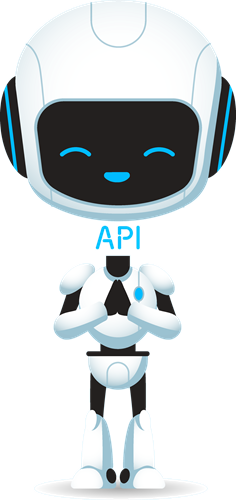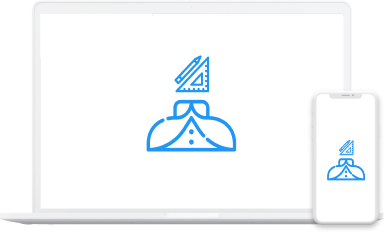What Is Headless Commerce And Headless PWA?
Emerging yourself into the world of Progressive Web App (PWA), one thing you need to be familiar with is the term headless PWA. To get to know this, we recommend you figure out headless commerce and its benefits first. From that, you may have a clearer view of headless PWA and its future in e-commerce.
Let’s get start!
Contents
What Is Headless Commerce?

Headless Commerce = Commerce Loses Its Head?
Well, as you know, a regular website can be separated into two critical components at the most basic level: Front-end and Back-end, which are closely associated.
The Front-end (Head) provides a user interface with which the consumers interact to view and buy products (for example, homepage, product page, category page, cart and checkout page, etc.).
The Back-end (Tail) contains and executes all business logic necessary to make things happen (for example, the database, the server, the admin panel, etc.).
Deploying a headless architecture means decoupling the Front-end from the Back-end while still linking with them using APIs.
In a simple explanation, headless architecture involves encapsulating all business operations with the participation and leverage of the API layer.
The APIs are still backed by the backends but made available to be hooked into by any front-end channel. As a result, this overcomes the limits of the original structure, becomes more adaptable, and delivers more outstanding customer experiences.
Headless Commerce Benefits

1. Save time and human resources for front-end upgrades
As usual, since Front-end and Back-end are fused, most of the Front-end changes will be related to specific parts on the Backend. It also means that if you want to modify something on the web storefront, it’s a must to do on both sides – front & back.
But when companies switch to headless commerce, things happen differently. They can apply particular changes on the Front-end dependently – without editing the associated code in the Back-end.
What can we get from it?
Well, first it cuts down nearly half of the time for the total work.
Second, it saves human resources for each front-end upgrade since back-end developers do not need to join.
For e-commerce websites, keep maintaining and upgrading the storefront frequently is crucial to stay competitive. Therefore, headless architecture will help to make things done easier and faster.
2. Avoid unexpected risks from back-end changes
In traditional CMS (Content Management System), most changes in the backend lead to changes in the front. Thus, just a few misconfigurations can negatively affect the site’s performance, for instance, the user interface.
In contrast, with headless CMS, the front end does not need to know anything about what goes on inside the back end, no matter how complex, as long as it communicates with it via API.
In fact, because the front and back end is totally separated, the entire back-end system could be tweaked or even replaced without affecting front-end functioning, as long as the new system maintained the same APIs.
For example, an eCommerce front end has to know what API to call to the back end to retrieve all the information connected to a “Product” to populate the information on a Product Detail Page accurately.
Further, companies’ developers may control and go wild with the back end when applying new functions without the worry of damaging the front end.
As a result, the true potential of a headless approach to digital commerce lies in letting each system component evolve at its own pace. If the back end slowly, progressively, and cautiously, the front end quickly and dynamically responds to customer expectations, letting them enjoy a consistent purchasing experience across all touchpoints.
3. Efficiently support marketing campaigns
An efficient marketing strategy often requires creating many landing pages for different campaigns. Thus, the page content needs to be updated regularly to keep up with changes in the brand’s products and campaigns.
This needs to be done in a short amount of time to ensure the outcome of the marketing strategy. Everyone knows that keeping up with the latest trends in consumer behavior and preferences plays a vital role in its success.
As the time to market is a deciding factor, a huge amount of time spent updating the site’s back end will risk losing potential customers.
However, headless commerce tells a whole different story. Multiple heads such as desktop, mobile, voice assistants, Instagram feeds, and more can all be supported with just a single back end.
Marketers and merchandisers may now quickly experiment and iterate their ideas without worrying about the issues this causes on the back end. IT can offer new “materials” quickly enough without concern of causing malfunction.
Now, It’s Turn Of The Headless PWA
Headless PWA = PWA + Headless Architecture
To put it simply, headless PWA refers to a PWA that fully implements the headless solution.
First, it’s worth noting that PWA can be either headless or not.
However, by combining those, we can enjoy incredible benefits of both worlds:
- Converting a website to PWA remains the same backend while developing a new PWA storefront to replace the original web’s frontend using the same API.
- PWA, which is totally headless, allows merchants to connect the app-like front end to any backend system via APIs.
- Updating the design for the PWA storefront also becomes easier and faster
- A PWA storefront works stably and delivers the best performance to customers
- The PWA front ends may be designed and built to perform ideally on any screen, from a smartphone to a large desktop monitor.
These experiences may be sewn together into a seamless shopping cycle, with the actual transaction occurring wherever and whenever the consumer wants.
Go For A Headless PWA If You Can
There are numerous PWA solutions available in the market. After being familiar with the headless solution and headless PWA and its benefits, you know that choosing a PWA solution that does not employ headless is unwise. So, why don’t you go for a headless PWA?
